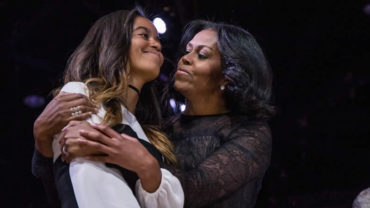News broke late this afternoon that Donna Karan is stepping down as the chief designer of the brand she founded after 31 years at its helm. According to LVMH, which bought Donna Karan International in 2001, she’ll remain a close adviser. For the time being, it will not begin a search for a successor, and, in turn, the label’s fashion shows will be put on temporary hiatus. Karan, for her part, plans to devote more time to her Urban Zen company and foundation.
Karan got her start at Anne Klein, where she rose from assistant designer to head of design. She launched her own label in 1984 with her husband, Stephan Weiss, and Takihyo, and quickly garnered acclaim for her “Seven Easy Pieces” collection of mix-and-match jersey separates. It was a practical, layerable, and, most of all, feminine system of dressing, and it made an especially big impact because it came at a time when women, new to the corporate workforce, were wearing masculine, boxy power suits with exaggerated padded shoulders. Think Melanie Griffith in Working Girl.
Karan was a rare woman running her own label in that era, but she had no shortage of success. She launched DKNY, a lower-priced collection, in 1988, and the company’s four-letter logo would dominate the corner of Broadway and Houston for well over a decade. From the start, she understood the power of marketing. In the ’90s, her famous friends Demi Moore and Bruce Willis posed together for her campaign. They were striking images, but perhaps her most arresting advertisements were the ones that starred model Rosemary McGrotha circa 1992, right hand in the air, being sworn in, presumably as the president of the United States.
Karan’s oeuvre ranged well beyond those early jersey separates, as the photos of McGrotha in her smartly tailored suit suggests. For my part, I’ll never forget the long, dévoré velvet dresses of 1996, suspended from the skinniest of straps and exposing no small amount of skin. Her flair for travel and her yoga practice have informed countless other collections.
In my early days at Women’s Wear Daily, Karan’s name was often linked to her biggest competitors: Calvin Klein and Ralph Lauren. It was always “Donna, Calvin, and Ralph.” They were at the absolute pinnacle of American fashion. In the nearly 20 years since, if Karan’s dominance on the runway has waned, her outspokenness certainly hasn’t. She has often talked about the senselessness of delivering winter clothes in July and summer ones in January. And, of course, she has been very vocal about her causes through Urban Zen.
Karan celebrated her 30th anniversary last year with a special show downtown, not far from the Stock Exchange, where she took her company public in 1996. Fashion was in the midst of a Donna Karan moment at the time, with younger designers reinterpreting her signature jersey draping and burnout velvet gowns. She may no longer be running one of America’s most important brands, but her influence will continue.






